- Local Time: 01:33 PM
- Weather: 27 ℃ / 81 ℉
This article explores Egypt’s 30 most stunning natural wonders, showcasing the country’s breathtaking diversity shaped by nature and cosmic forces. It highlights Egypt’s unique blend of oases, deserts, mountains, seas, and protected parks, reflecting its rich geography, history, and ecological treasures. From the vital Nile River and vibrant Red Sea reefs to the surreal White Desert and tranquil Siwa Oasis, each destination offers a gateway to adventure, serenity, and discovery. Together, they reveal why Egypt remains a magical and timeless travel destination.

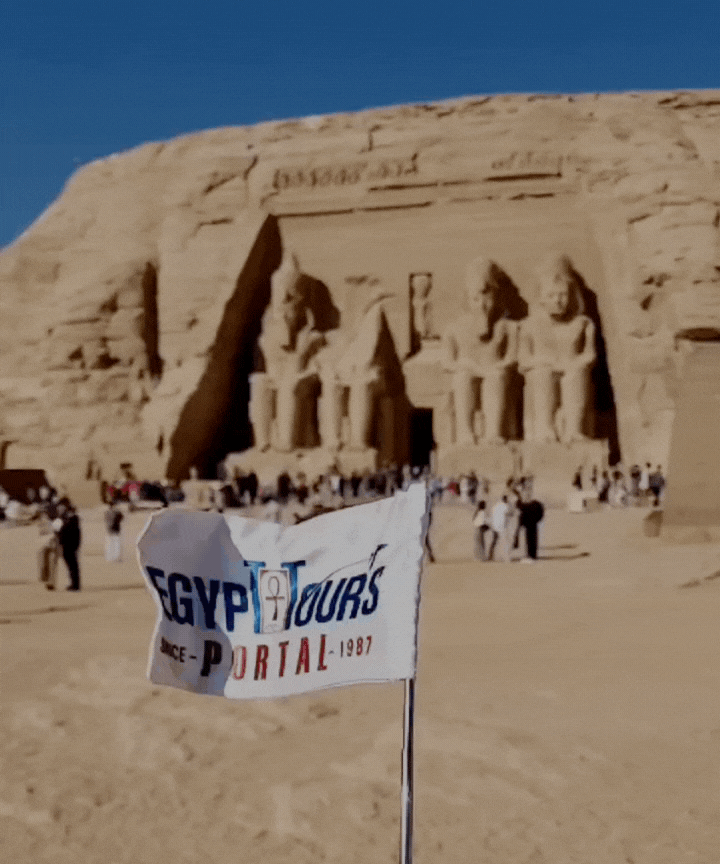
The Natural Places of Egypt are geographical, historical, and ecological blessings that were carved by celestial creatures using the forces of nature to offer travelers the chance to witness a golden ethereal symphony of allure and grandeur. Egypt will open the door to the truly unique heritage of this complete travel destination that has stood the test of time.
All the attractions of Egypt have the potential to provide everyone with the ultimate chance to live the most entertaining, relaxing, and enriching travel experience. Everyone will get to enjoy a magnificent mixture of history, culture, and absolute beauty that will overflow from all these phenomenal places.
The Top 30 natural milestones of Egypt will unlock the imagination of all the world travelers by uncovering the highly diverse wealth of Egypt that comes in the shape of Oases, deserts, epic mountain peaks, tropical marine wonders, archaeological landscapes, and the many treasures of this heavenly civilization. In the article, everyone will have a harmonious quest for self-discovery. Here is a List of the Top 30 Natural Places to Visit In Egypt:
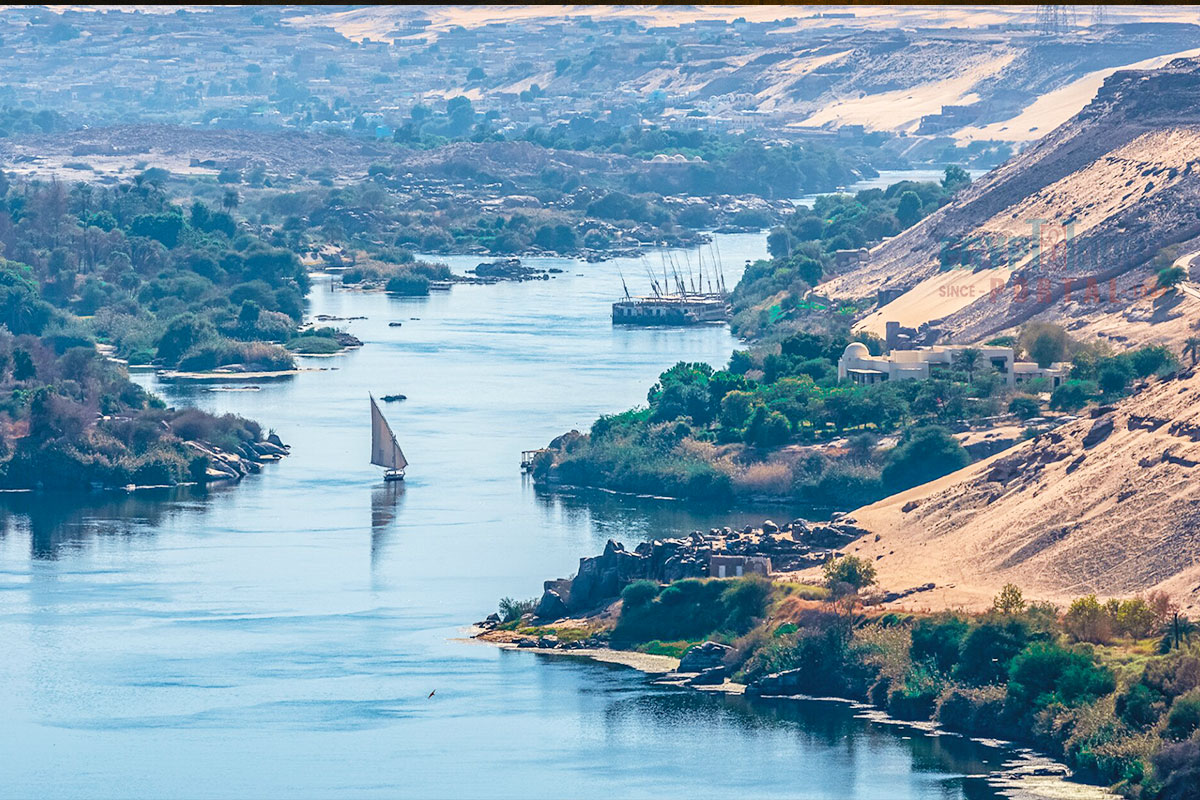
Ancient Egyptian people developed a unique culture and a timeless civilization influenced by their rich geography and the heavenly Nile River. The nutrient-rich soil of the Nile Delta and the waters of the Nile River were the key to life, which was crucial for food, agriculture, travel, construction, transportation, and papyrus production of the ancient Egyptian civilization that endured for thousands of years. The Nile River is the world's longest river that stretches over 6,600 kilometers, flows northward, and empties into the Mediterranean Sea.
It has historically served as a vital source of irrigation, transforming arid surroundings into fertile farmland with three branches that run through multiple African countries. The White Nile originates from Lake Victoria, the Blue Nile causes annual floods, and the Atbara River occasionally flows. The Egyptian calendar revolved around the Nile's cycles, using Nilometers for measurements, similar to modern almanacs. Ancient Egyptian gods like Hapi and Osiris were linked to the Nile's flood, fertility, and abundance, impacting religion and art.
The Nile River served as a watery highway, crucial for travel, trade, mining, and architecture. Boats were vital in various aspects, including funerary practices. The ancient Egyptians called the banks of "Kemet" (black land) to represent the fertile Nile Valley. High dam construction was made in the 60s that has altered its natural dynamics, impacting sediment flow and contributing to erosion. Despite these challenges, the Nile remains a significant trade route connecting Egypt to prosperity of Egypt. And the Nile Cruise between Luxor and Aswan is an ethereal adventure that uncovers the natural beauty of Upper Egypt.

The Red Sea Riviera is found along Egypt's coast near the Eastern Desert and south of Sinaihas given rise to thriving exclusive resorts like Hurghada, Marsa Alam, and Ain Sokhna, offering picturesque beaches and warm water temperatures, making it ideal for scuba diving and water activities. The Eastern Desert now hosts camping and quad biking adventures. The Sinai Peninsula provides crystal-clear waters and historic landscapes, with Sharm el-Sheik boasting beaches, nightlife, and marine life.
Dahab and Nuweiba offer more relaxed atmospheres and access to Sinai's interior. The Red Sea's expanse spans around 174,000 square miles and is named after the Trichodesmium Erythraeum algae. Destinations like Hurghada, Sharm el-Sheik, El Gouna, and others provide various activities, from diving to relaxation, while the Red Sea's beauty remains accessible to all.
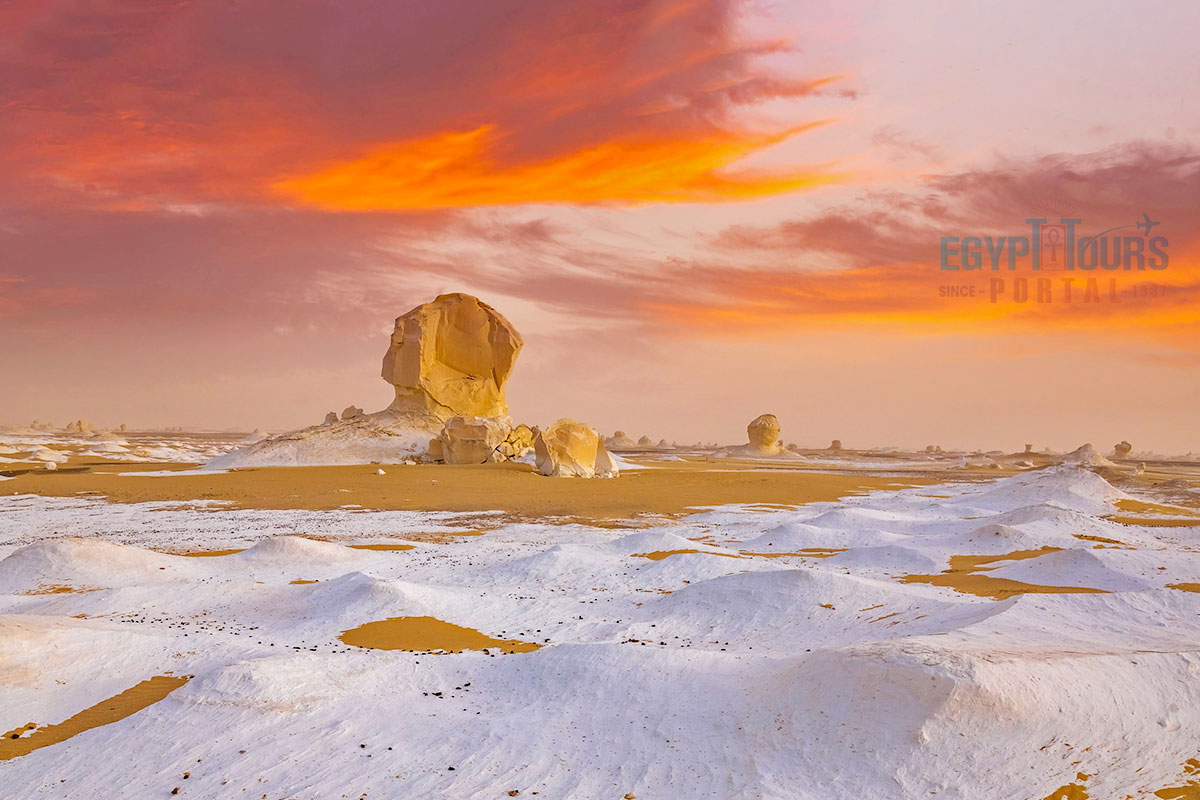
The white desert was a protected area in 2002 and stands as a marvelous national park in Egypt. Situated 45 km (28 mi) at the northern side of Qsar El Farafra, within the Farafra depression and partly in the great Farafra Oasis, this park features expansive, heavenly white chalk rock formations molded by the forces of sand and wind erosion. The landscape showcases cliffs, sand dunes from the Great Sand Sea, and features like Wadi Hennis, Ain El Wadi, and Ain El Maqfi oases.
It encompasses 300 km2 (120 sq mi). White Desert National Park is home to diverse wildlife, offering a sanctuary for various species. Notable inhabitants include the Rhim gazelle, the Dorcas gazelle, Barbary sheep, Rüppell's gazelle, jackals, red and fennec foxes, and the elusive sand cat. The park's altitude ranges from its highest point, El Qess Abu Said, above sea level at 353 m (1,158 ft), to its lowest, Wadi Hennis at 32 m (105 ft).
Discover all the magical national parks of Egypt
Read More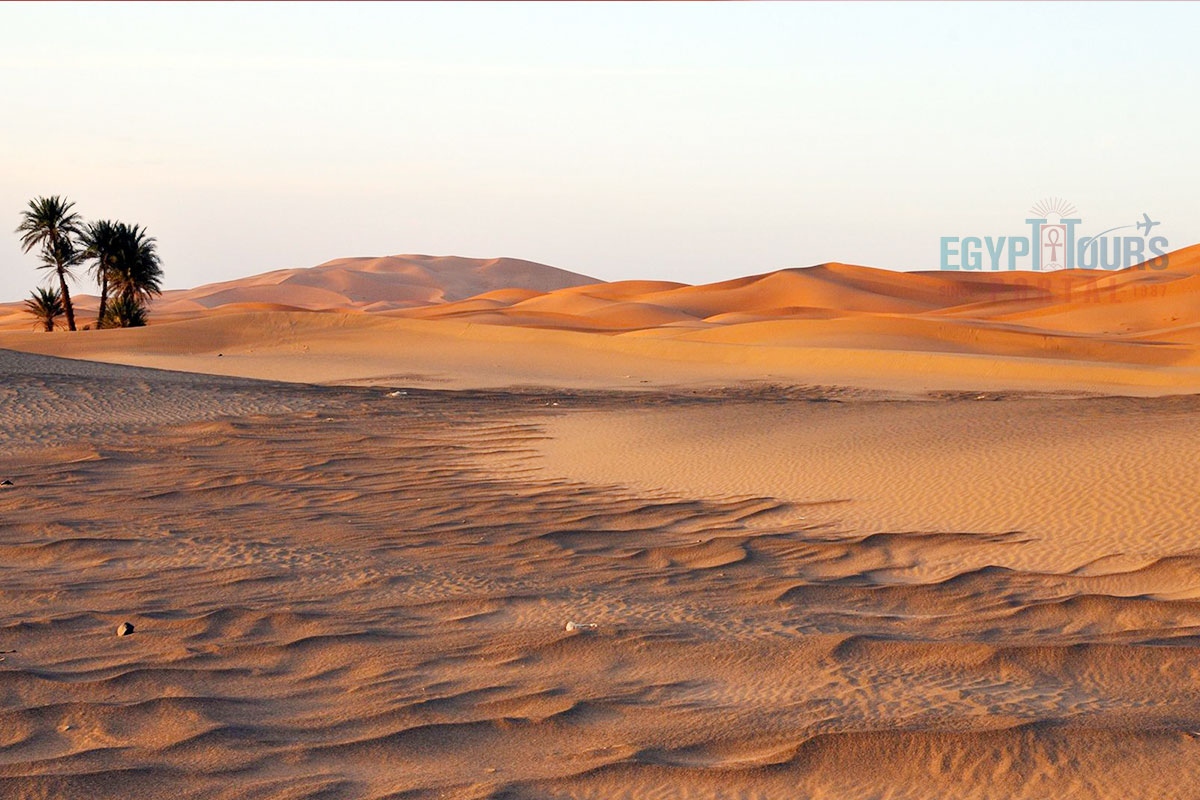
The Sahara Desert is known to occupy about 10% of Africa's landmass and spans over 3.5 million square miles, which makes it one of the world's largest deserts. It borders the Red Sea to the east and extends to the Atlantic Ocean in the west, with the Mediterranean Sea and the Sahel defining its northern and southern edges, respectively. The desert comprises countries like Algeria, Chad, Egypt, Libya, Mali, Mauritania, Morocco, Niger, Sudan, and Tunisia. Shaped by wind and sand erosion, the Sahara boasts diverse topography, including sand dunes, stone plateaus, valleys, Oases, and salt flats.
It hosts various wildlife, such as gazelles, sheep, foxes, and more, adapted to its challenging environment. The Sahara's climate is extremely arid, with less than 2.5 cm of rainfall annually. The region's average temperature is around 86°F (30°C), and it can soar to 122°F (50°C) during the hottest months. Plant and animal life in the Sahara is well-suited to the harsh conditions, with roughly 500 plant species and a variety of animals adapted to the desert's extreme circumstances. The Sahara has a diverse human population of over 4 million, primarily residing in Egypt, Mauritania, Libya, Algeria, and Western Sahara.
Many people are nomadic, while agriculture and resource extraction support settled communities. Egypt's eastern border encompasses the Sahara, and the Pyramids of Giza mark its edge. Egypt and Morocco offer established tourism options within the Sahara. Activities such as horseback riding, super safari, and camping provide unique experiences amidst the desert's awe-inspiring landscapes.
Explore all the incredible deserts of Egypt
Read More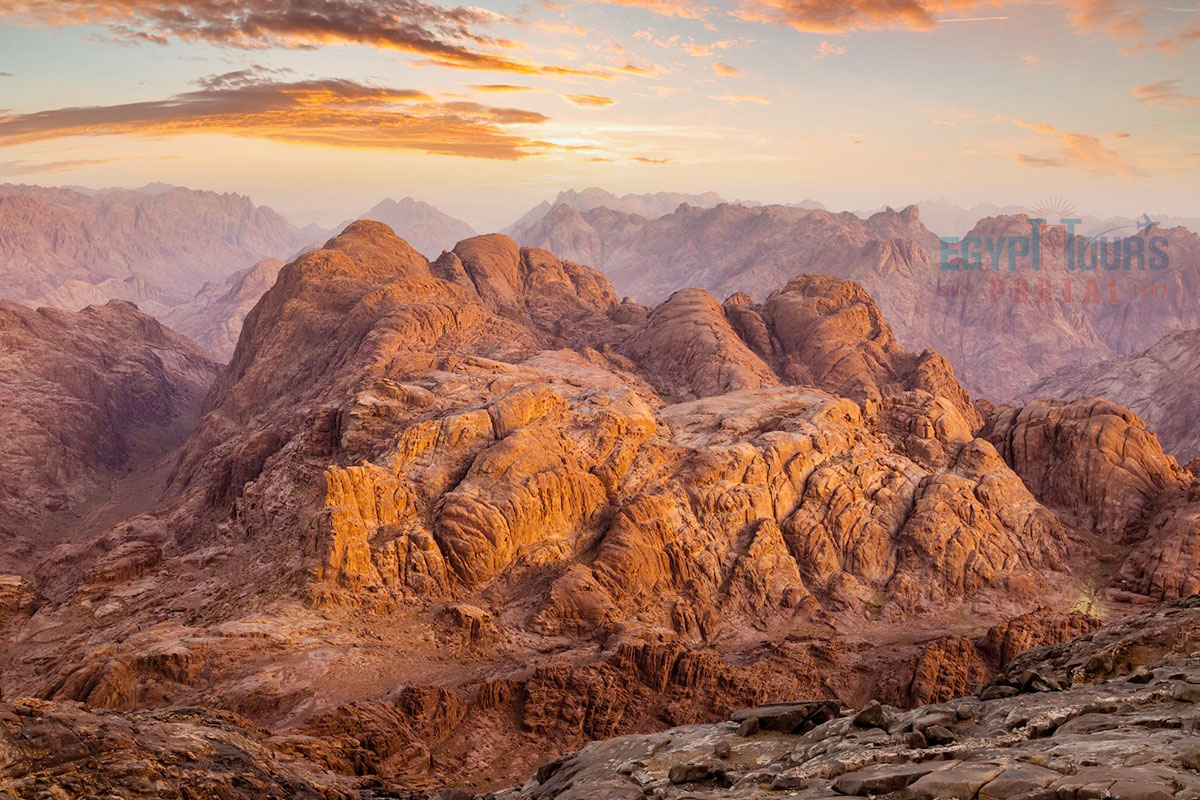
Mount Sinai is also known as Jabal Musa, found on Egypt's Sinai Peninsula, and is believed to be the biblical Mount Sinai where Moses received the Ten Commandments according to the Torah, Bible, and Quran. It stands at 2,285 meters (7,497 feet) near the city of Saint Catherine, which holds the oldest working Christian monastery on the face of the earth. It features a complex of rocks, including alkaline granites and volcanic formations, formed during the late stages of the Arabian-Nubian Shield's evolution.
The summit houses a mosque and a Greek Orthodox chapel enclosing a rock believed to be the source of the biblical Tablets of Stone. "Moses' cave," where Moses was said to have waited for the Ten Commandments, is also located on the summit. Mount Sinai holds significance in Islam, associated with the Prophet Musa (Moses) and mentioned in the Quran by various names.
Two main routes lead to the summit: Siket El Bashait, a longer and gentler path, and Siket Sayidna Musa, a steeper route with the "steps of penitence" leading through a ravine behind the monastery.

Siwa Oasis is a magical piece of paradise famous for its cultural uniqueness, relaxation, and breathtaking beauty, which is found about 350 miles (560 km) away from Cairo and is loaded with picturesque landscapes, boasting a distinct culture and language. Oasis is very fertile and supports thousands of date palms and olive trees, plus several rare animal and plant species.
Siwa Oasis offers a wide range of natural and historical attractions, including the Shali mound, Cleopatra’s Spring, the Salt Lakes, the Temple of the Oracle, the Mountain of the Dead, Fatnas Island, the Great Sand Sea, and the Siwa House Museum. The oasis features natural salt pools that allow safe swimming, and its unique features make it an unforgettable destination. The oasis was isolated until the 1980s when a highway connected it to Mersa Matruh. Despite the growth of tourism, Siwa remains a conservative community with cultural values worth respecting.

The Faiyum Oasis is one of the biggest oases in Egypt, found in the shape of a depressed area on the western side of the Nile River about 62 miles south of Cairo. It covers an estimated area of 1,270 to 1,700 square km and is irrigated by the Bahr Yussef channel, which branches off from the Nile and flows through the basin, providing water for agriculture, which leads to the rise of magnificent plant life and the gathering of rare animals.
The basin was once a freshwater lake in prehistoric times, but is now a saltwater lake called Lake Moeris, which is also known as the Birket Qarun. Faiyum Oasis is known for its rich history, which dates back to ancient times, and played a significant role in irrigation and controlling Nile floods. The Faiyum was known as the twenty-first nome of Upper Egypt and had various capitals, including Crocodilopolis and later Arsinoe. The Faiyum Oasis was an important agricultural center during the Twelfth Dynasty of the Middle Kingdom (2055 BC – 1650 BC) and the Ptolemaic Dynasty (305 - 30 BC).
It became a vital source of agricultural produce for the Roman Empire (30 BC - 476 AD). The region is famous for its well-preserved portraits, known as Faiyum portraits, which were painted on wood using an encaustic technique. The area has yielded archaeological remains from various periods, from prehistoric to modern times. The cult of Sobek, “the crocodile god,” was prominent in the Faiyum as seen across all the ruins found there.

The Colored Canyon is an extraordinary hidden gem in Egypt's Sinai Peninsula that offers a stunning natural spectacle that reveals a different kind of natural allure. It is situated around 210 miles from Cairo. This 800-meter-long and 30-meter-deep canyon near the village of Nuweiba showcases brilliantly colorful rock formations shaped by ancient ocean erosion that formed millions of years ago. It is accessed mainly by a private vehicle or guided tours from Dahab, Sharm el-Sheik, and Cairo.
The canyon's walls are known to reach up to sixteen stories, display vibrant colored waves, and captivating textures. The erosion of sandstone and limestone over millions of years was the main cause behind crafting its phenomenal appearance. The narrowness of the canyon at times is only a few feet wide, which creates an intimate and secretive atmosphere. The Colored Canyon remains untouched by human history and only stands as a truly natural wonder like any other in the world.
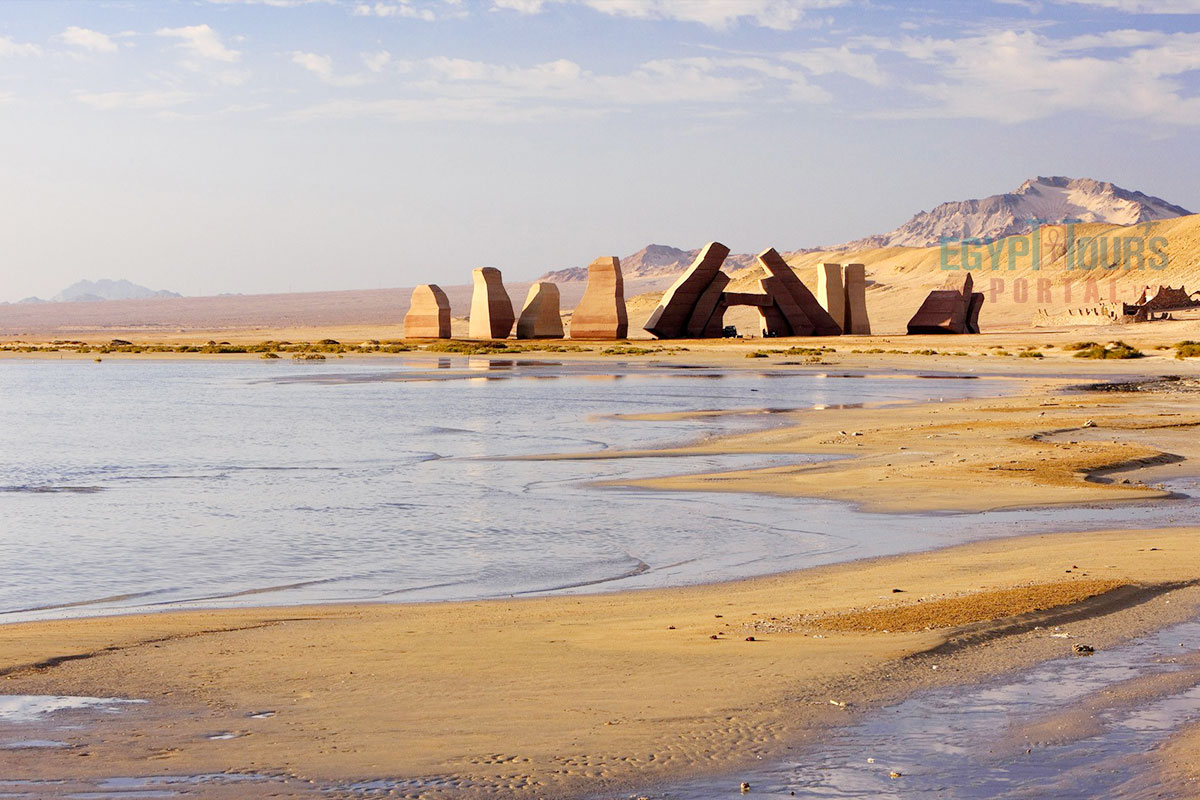
Ras Mohammed is a miraculous national park found at the southern tip of the Sinai Peninsula that offers scenic views of the Gulf of Suez and the Gulf of Aqaba. It is designated to protect marine life from any damaging fishing practices or urban development. The park was established in 1983 by the Egyptian Environmental Affairs Agency. It encompasses 480 km2, with 135 km2 on land and 345 km2 underwater. The park features many islands, underwater caves formed by earthquakes, and diverse desert habitats.
Mangroves and unique geological formations, such as inland cracks with pools of water, characterize the area. Bird migration is facilitated while the climate is arid climates with minimal winter rainfall and high summer temperatures. Ras Mohammed is renowned for its coral reef ecosystems found across the Red Sea Riviera, with over 220 coral species, popular dive sites like Shark Reef and Yolanda Reef, and the famous wreck of the SS Thistlegorm.
The park hosts a rich marine biodiversity of over 1,000 fish species, sea turtles (including green and hawksbill turtles), starfish, sea urchins, mollusks, and crustaceans. Terrestrial features include acacia trees, dum palms, and ephemeral plants.
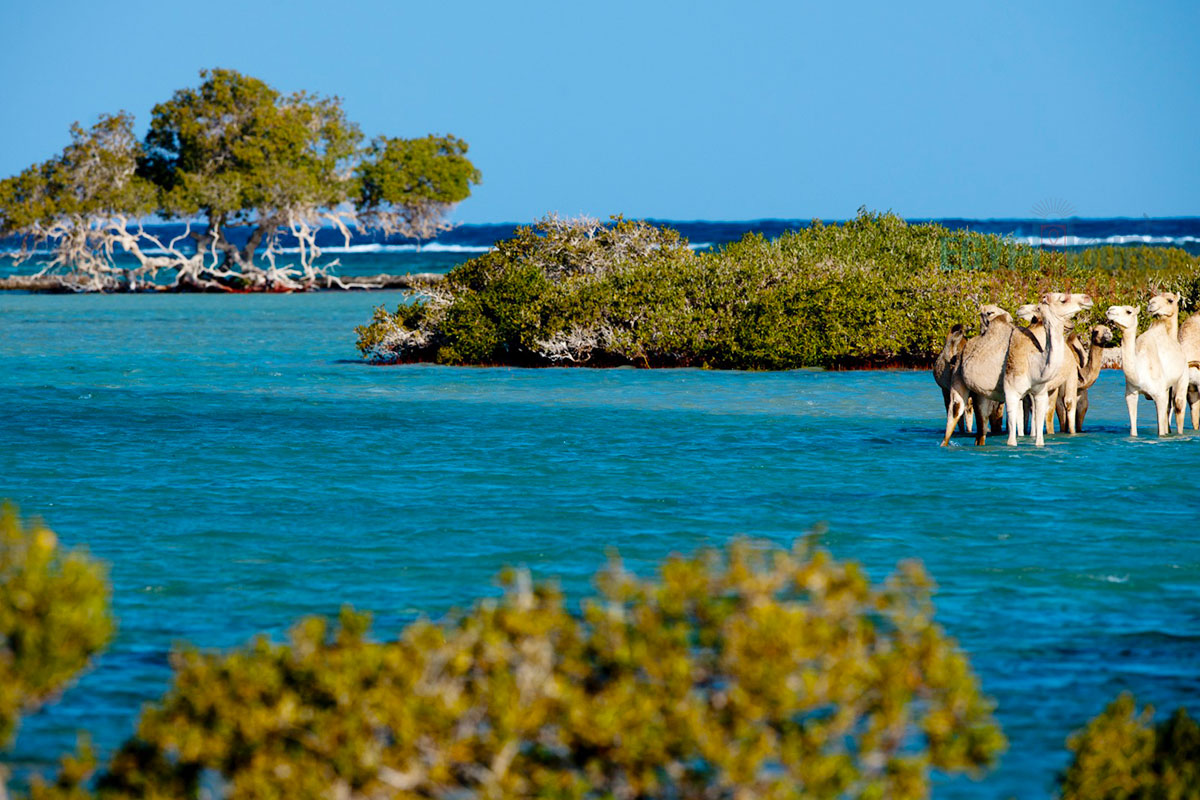
Wadi El Gemal National Park is an expansive protected area in Egypt covering 7,450 square kilometers, with 4,770 square kilometers of land and 2,100 square kilometers of marine space. The park features rich coastal ecosystems, including diverse coral reefs with over 450 coral species and over 1,200 fish species. It encompasses five islands, serving as important breeding grounds for various bird species like African spoonbills and herons, and providing habitat for endangered marine creatures like dugongs and green turtles.
The park is a haven for desert-adapted wildlife such as aoudads (Barbary sheep), Dorcas gazelles, jerboas, and Nubian ibex. It also holds historical significance, featuring prehistoric rock art, ancient mining communities, and Ptolemaic and Roman ruins. The park's coast consists of semi-rocky areas, sandy beaches, and extensive mangrove forests, particularly in the southern region. These mangroves house the largest mangrove forest in the Red Sea.
The coastal waters are ideal for snorkeling and scuba diving, with shallow areas and charismatic spinner dolphins performing captivating displays. Wadi El Gemal National Park was established in 2003 as a protected area, safeguarding its diverse ecosystems and cultural heritage.
Discover all the incredible places for safari in Egypt
Read More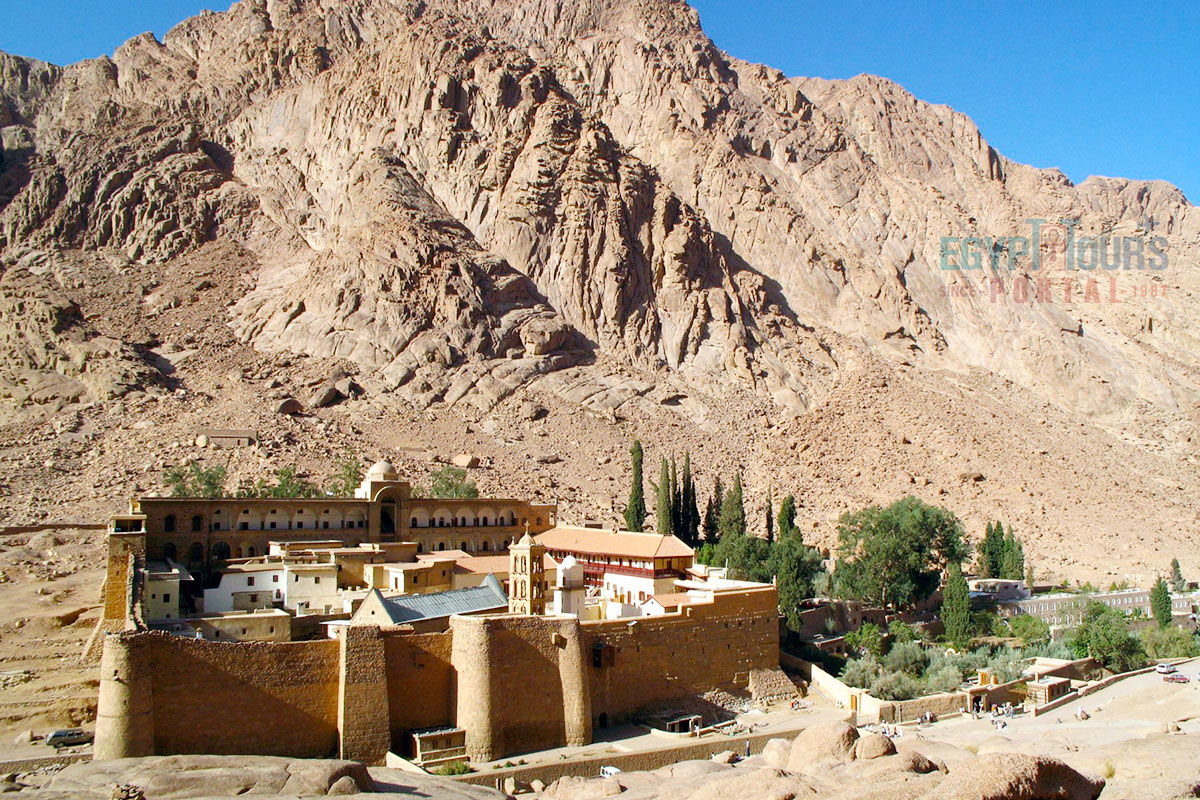
Saint Catherine's Monastery is a magical Greek Orthodox monastery located on Mount Sinai in the Sinai Peninsula, which rises more than 5,000 feet above sea level. It is the smallest autonomous church within the Eastern Orthodox church. Founded in 527 by Byzantine Emperor Justinian I (527–565 AD), the monastery's construction began in 530 CE, and it has been a refuge for Christians during times of threat, even establishing a mosque within its walls to appease Muslim invaders. The monastery has an unbroken history since the 6th century.
Its inhabitants include Christian Arabs employed by the monastery and Muslim Bedouin Arabs who serve as guards and receive support in return. Saint Catherine's Monastery's main treasures are highly famous for its ancient icons and manuscripts that date back to before the 8th century, and a library constructed in 1945 holding mainly Greek and Arabic manuscripts. Notably, the Codex Syriacus is a Syriac Gospel text from around 400, and parts of the Codex Sinaiticus, which is a significant Greek Bible manuscript from the 4th century that were discovered here.
In 1975, an accidental discovery revealed over 3,000 additional manuscripts in various languages, including Greek, Semitic, Afro-Asiatic, and Indo-European, providing insights into history and writing. The monastery was designated a UNESCO World Heritage site in 2002.
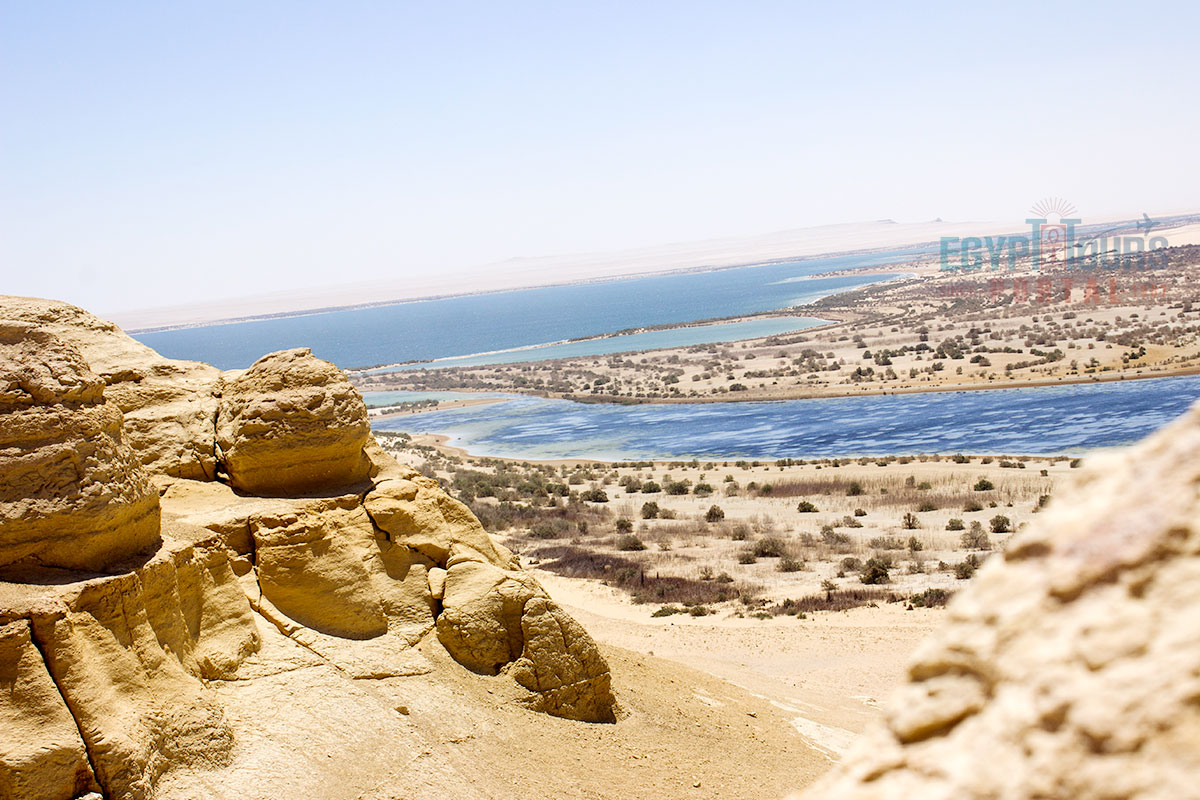
Wadi El Rayan is a unique and blessed piece of art that acts as a nature reserve located in the Faiyum Governorate of Egypt, overseen by the Ministry of Environmental Affairs (EEAA). In Coptic sources, Wadi El Rayan is referred to as Pilihēy as a salt lake where Samuel the Confessor would rest. It covers an area of 1,759 square kilometers, with the dominant feature being the Wadi El Rayan lakes spanning 113 square kilometers. The valley is situated around 65 km southwest of Faiyum city and 80 km west of the Nile River.
The lakes were created through agricultural drainage and consist of an upper lake (50.90 km2) and a lower lake (62.00 km2) connected by waterfalls. The region boasts three marvelous sulphur springs, expansive sand dunes, and the biggest waterfalls in Egypt. Marine fossils and archaeological remains are found in the area of Gabal Manqueer Al Rayan, and extensive dune formations are present near Gabal Madwera. The northwest holds Wadi El Hitan, which is a beautiful protected area renowned for its fossils of extinct whales.
Flora and Fauna mainly grow around the marvelous springs and at the base of massive dunes, featuring 13 magnificent species of perennial plants along with Calligonum comosum and Zygophyllum album. Wadi El Rayan houses the rare slender-horned gazelle, as well as the dorcas gazelle, fennec fox, and Rüppell's fox. The area supports various reptiles, mammals, and resident and migratory birds, contributing to its rich biodiversity.

Siwa's hyper-saline lakes have become a major attraction as seen across social media, with their salt content reaching up to 95%, which enables every true seeker of thrill and tranquility to float and escape the power of gravity. The lakes are considered therapeutic, especially for skin diseases, sinus issues, and rheumatism, leading to Siwa's recognition as a medical tourism destination. The four main salt lakes in Siwa include Zeitoun lake, which is by far the largest at 5760 acres, Aghormy in the north-east, Maraqi (or Fatnas) in the west, and smaller scattered lakes.
Siwa is believed to possess a unique energy attributed to the salt-covered landscape, considered to dispel negative energy. Swimming is safe due to high salt content, which prevents drowning, though caution is advised for the eyes. Natural hot springs and sand baths further contribute to Siwa's healing practices.
Siwa's remote location and relative inaccessibility have preserved its unique charm, offering an unspoiled experience that has remained unchanged for centuries. The turquoise-blue salty lakes of Siwa provide a magical and therapeutic escape for those seeking rejuvenation.
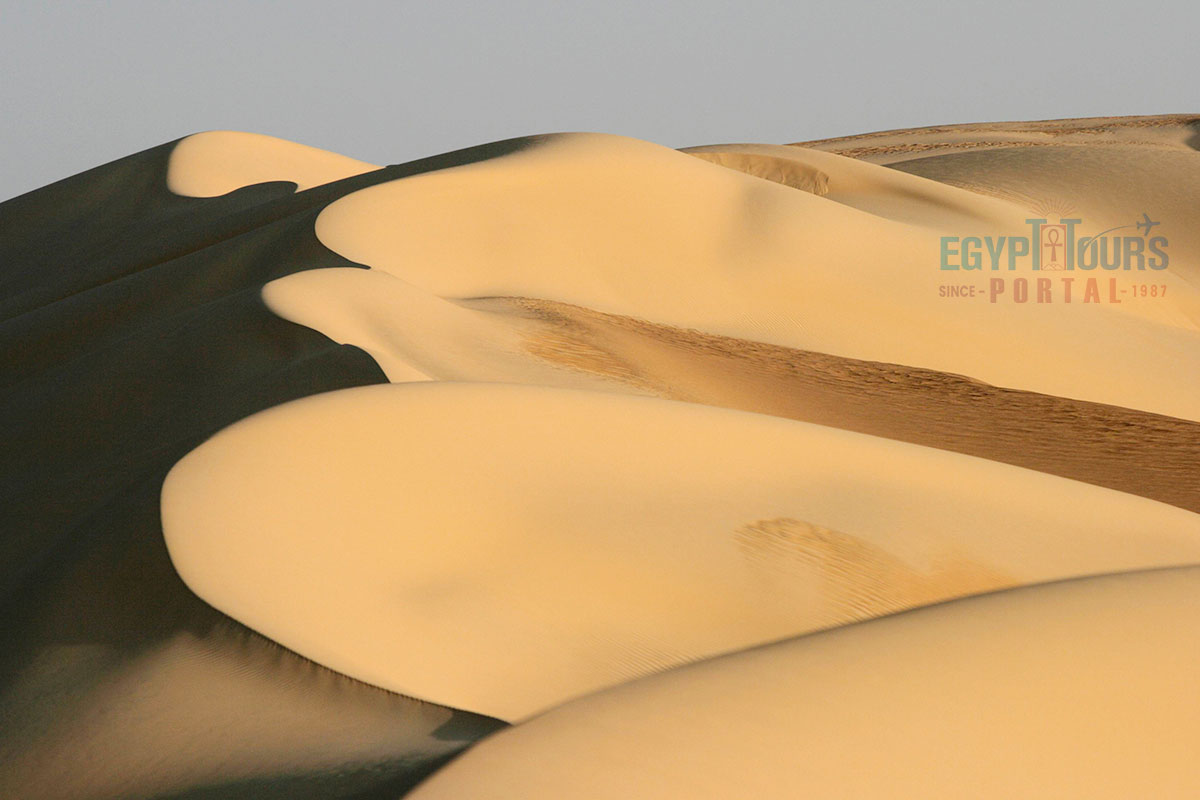
The Great Sand Sea is a magnificent expansive sand desert situated between western Egypt and eastern Libya in North Africa, which covers an area of approximately 72,000 km2 (28,000 sq mi). The great sand is characterized by vast, magical dunes which span approximately 650 km (400 mi) from north to south and 300 km (190 mi) from east to west. Notably, satellite imagery reveals the presence of lengthy sand ridges aligned in a general north-south orientation across the expanse of the Great Sand Sea.
However, beneath its seemingly consistent surface, the desert harbors two significant regions featuring distinct megadune formations. Adjacent to the Libyan Calanshio Sand Sea in the north, the Egyptian sand sea extends in parallel alignment. Covering about 10% of the Egyptian Western Desert's total area, the dunes of the Great Sand Sea make a substantial contribution to the desert landscape. Within this vast desert expanse lies the Siwa oasis, positioned approximately 50 km (30 mi) east of the Libyan border within the eastern portion of the Great Sand Sea, also known as the Egyptian Sand Sea.
While the Great Sand Sea held prior familiarity among Tuareg communities and caravan-traveling traders navigating the Sahara, it was Friedrich Gerhard Rohlfs who became the first European to formally document this desert. Commencing his Saharan explorations in 1865, Rohlfs bestowed the name "Große Sandmeer" (Great Sand Sea) upon the sprawling dunes. Nevertheless, it wasn't until 1924, with the cartography efforts of explorer Ahmed Hassanein, that Europeans truly grasped the massive expansive nature and full scope of the Great Sand Sea.
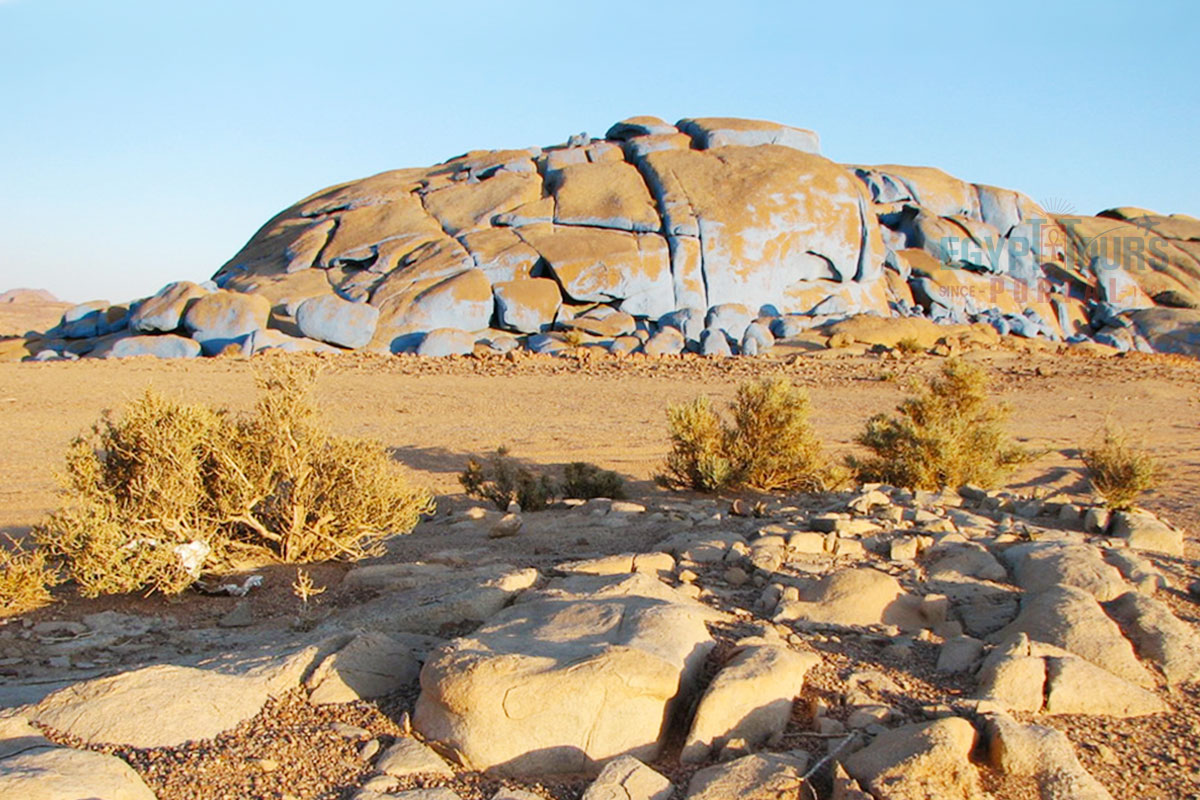
The Blue Desert, or the Sinai Peace Junction, is a man-made modified natural wonder found in a marvelous area within the Sinai Desert near Saint Catherine, where rocks have been painted with a distinctive blue color. This artistic installation was initiated in 1980, following the 1979 Egypt peace treaty. Belgian artist Jean Verame undertook this project to symbolize peace. The concept was born around the time of the Israel-Egypt Peace Treaty's official approval in March 1979.
Situated between Dahab and St. Catherine, the Plateau of Hallaoui served as the canvas for this unique artwork. Inspired by the song "Don't It Make My Brown Eyes Blue," Verame spent two years gaining approval from Egyptian authorities and later obtained support from Egyptian President Anwar Sadat, and received ten tons of blue paint from the United Nations. Verame transformed the desert into a blue masterpiece. Over the following year, the "Line of Peace," sometimes called the "Sinai Peace Junction," emerged, extending nearly 6.5 km and adorning towering boulders with brilliant blue hues.
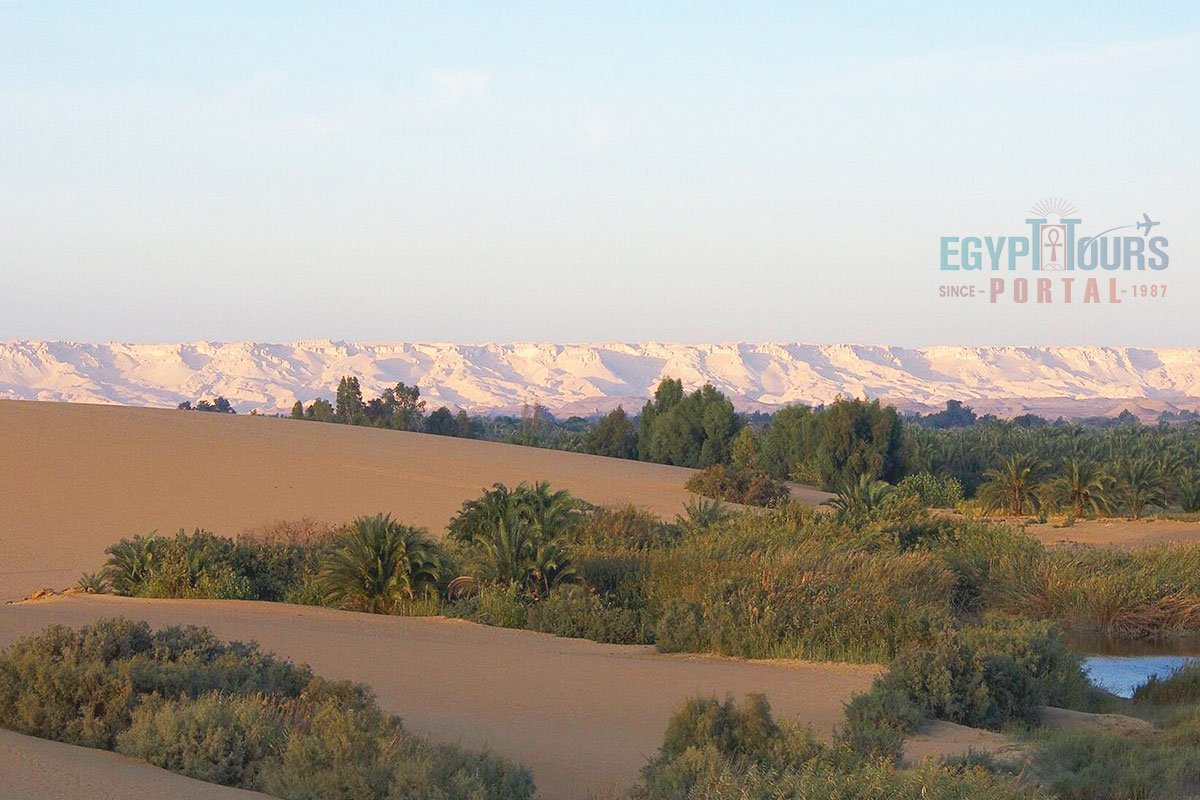
Dakhla Oasis is one of Egypt's seven oases, located in the magical embrace of the Western Desert, which is approximately 350 km (220 mi.) from the Nile and is flanked by the Farafra and Kharga oases. It covers an area of around 80 km (50 mi) east to west and 25 km (16 mi) north to south. Dakhla Oasis is home to multiple communities and sub-oases, including notable settlements like Mut, El-Masara, and Al-Qasr. The origin of the name "the inner oasis" directly reflects its Coptic and Greek designations.
Historical records suggest early interactions between pharaonic powers and the oasis, with human habitation tracing back to the Pleistocene period when the Sahara climate was more hospitable. Over time, nomadic tribes settled, particularly during wetter periods, and Dakhla Oasis became a focal point. During the pharaonic period, hieratic script was inscribed on clay tablets, providing insights into the region's governance and communication.
The Monastery of Stone, or Deir el-Hagar, a Roman temple dedicated to the Theban triad and Seth, stands as a testament to ancient architectural and religious practices. The Islamic town of Qasr ad-Dachla was established in the 12th century atop Roman remains, characterized by mud brick buildings and ancient inscriptions. Many modern excavations took place in this spectacular milestone, which dates to the modern days of the 19th century. In recent years, archaeologists have uncovered mud-brick tombs and artifacts, shedding light on the region's ancient past.
Witness the incredible greatness and treasures of the western desert
Read More
The Ras Abu Galum Protectorate, spanning 400 sq km of shoreline between Dahab and Nuweiba, boasts a striking landscape of coastal mountains, valleys, dunes, and beaches, hosting diverse diving and snorkeling sites. This area, described by scientists as a tropical-climate frontier, features 165 plant species, 44 of which are exclusive to Sinai, and supports various mammals and reptiles. Established in 1992, this ecologically vital zone safeguards mangroves and coral reefs.
The protectorate, adjacent to the Gulf of Aqaba, is inhabited by the Mizena Bedouin tribe, renowned for traditional fishing practices. The unique topography encompasses mountains, beaches, coral reefs, lagoons, and deserts, offering diverse bird, animal, and plant life. It's a hub for bird watching, diving, and safaris, with over 165 plant species and an intricate underwater cave system.
Managed to maintain its allure, the protectorate draws travelers with its picturesque beauty and granite mountains juxtaposed against coral reefs. Various excursions and trails, facilitated by local Bedouin guides, unveil the charm of Ras Abu Galum, from camel and jeep tours to coastal hikes leading to charming villages and campsites.
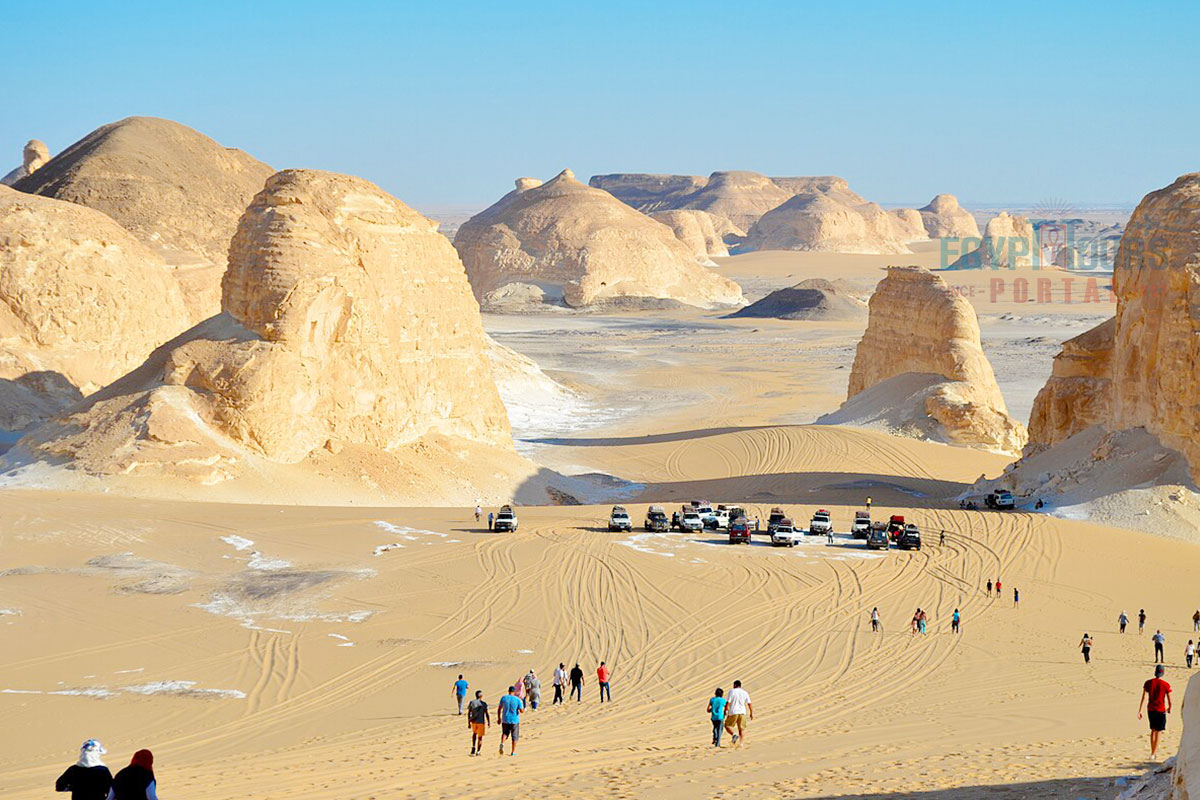
The Farafra Oasis is a 980 km² geological basin located in Egypt’s Western Desert, between the Dakhla and Bahariya oases. It is the second-largest depression in the region but has the smallest population, with around 5,000 residents, mostly local Bedouins living in the town of Farafra. The town features traditional mud-colored architecture and has gained modest tourism appeal.
The name Farafra comes from the Arabic word for “fizzy spring,” referencing its many natural water sources. In ancient Egyptian times, it was known as tꜣ jḥw, meaning "land of cattle." Archaeological evidence traces habitation in the region back to the late Pleistocene, with recorded history beginning in the Middle Kingdom and continuing through the Ptolemaic period.
A major attraction is the White Desert National Park, 45 km north of the town, featuring surreal white and cream-colored chalk formations shaped by desert winds. The area also contains over 100 natural wells, used for agriculture and tourism. Notable springs like Bir Sitta (Well 6), Bir Sab'a (Well 7), and Well 22 are popular for their warm, slightly sulfurous waters, ideal for swimming. Ain Bishay, a Roman-era spring, feeds a lush palm grove and various fruit trees near the town.
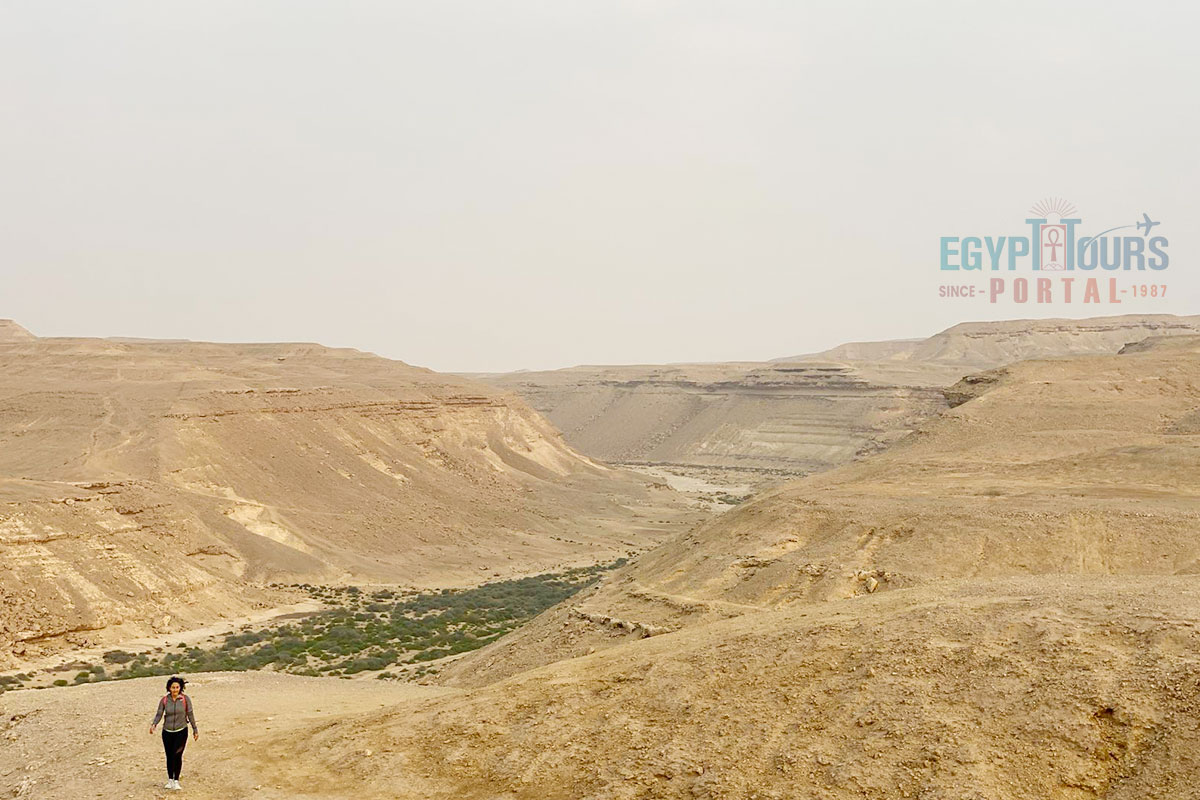
The marvelous Wadi Degla protected area earned its protectorate status in 1999 AD, which served as a marvelous, serene sanctuary amidst urban bustle. It beckons those seeking a tranquil encounter with nature. Embrace breathtaking vistas, relish clean, invigorating air, and partake in a range of engaging activities. The adventure commences at the entrance, leading you along an entertaining 10-kilometer trail.
Wadi Degla offers an array of pursuits, from jogging, running, and cycling to rock climbing and more. Everyone will have the chance to enjoy an epic barbecue gathering with loved ones amidst the serene backdrop of a perfect escape from daily stress, fostering relaxation and scenic enjoyment. Wadi Degla seamlessly fulfills your desires without lengthy travels. Be prepared for an exhilarating journey brimming with adventure and enjoyment, right within reach.
This haven hosts a diverse array of wildlife, including deer, red foxes, rabbits, reptiles, and a variety of birds, making it a haven for bird enthusiasts. The area's historical charm extends to the discovery of ancient fossils, remnants of its water-filled past. Countless uncharted spots invite exploration, with the option to embark on an enriching overnight desert camping experience.
Discover all the incredible places for camping in Egypt
Read More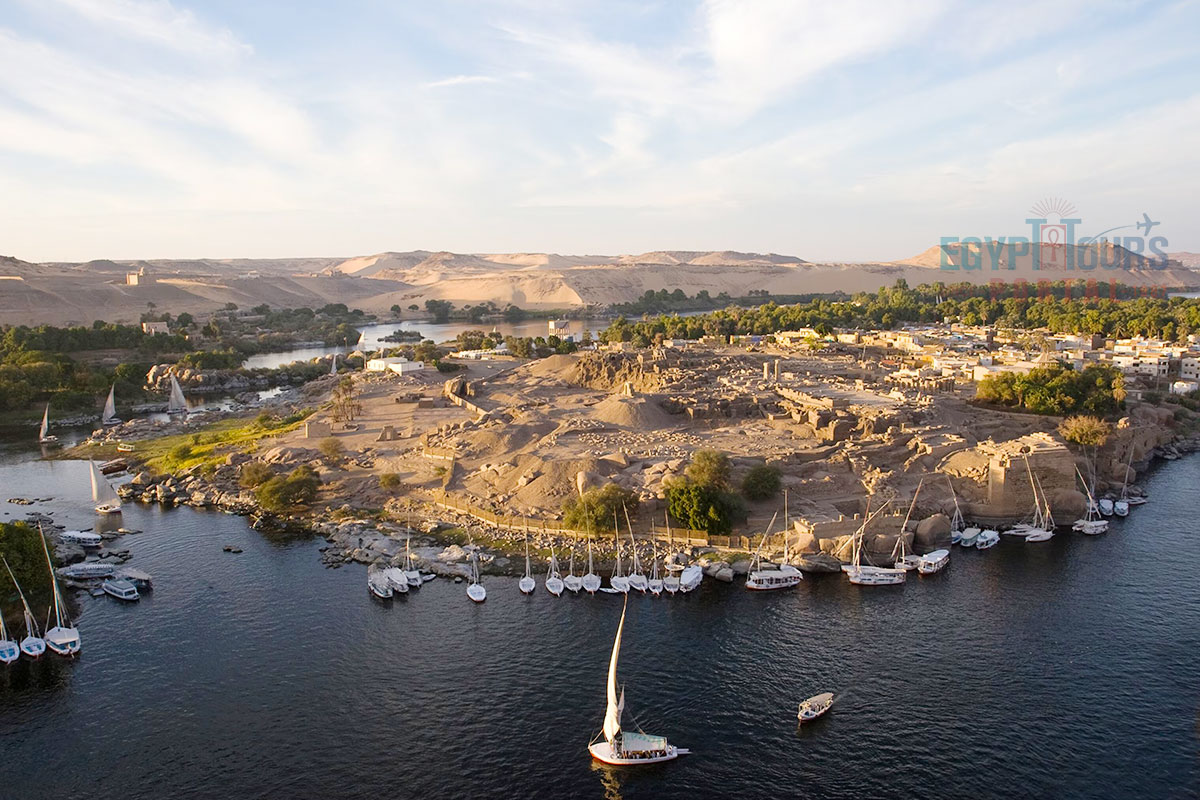
Elephantine Island is famous for its resemblance to standing elephants or an elephant's tusks, which offers captivating attractions in the charming golden city of Aswan. Elephantine Island's 1200-meter length and 400-meter width grace the west bank of the Nile River, near the first cataract. It served as a border between Nubia and Egypt during ancient times, boasting a history of strategic importance and trade.
During Ancient Egypt in the last days of the Old Kingdom, it was a pivotal trade route and a strategic defense post. Inhabited since the Early Dynastic Period (1650–1550 BC), the island's ancient name, "Abu," reflects its elephant-like boulders. It is known to be accessible by ferry or felucca, which thrived as a trading hub known as Swenet, leveraging its location near the First Cataract for defense and commerce. It played a role in the ivory trade and contributed to Egypt's construction projects.
Historical remnants include the Temple of Khnum, a nilometer, and the Temple of Satet. The island's historical temples, including Thutmose III and Amenhotep III, witnessed religious transitions. The Aswan Museum, situated on Elephantine's southeastern side, offers artifacts recounting Nubia's story and the island's significance.
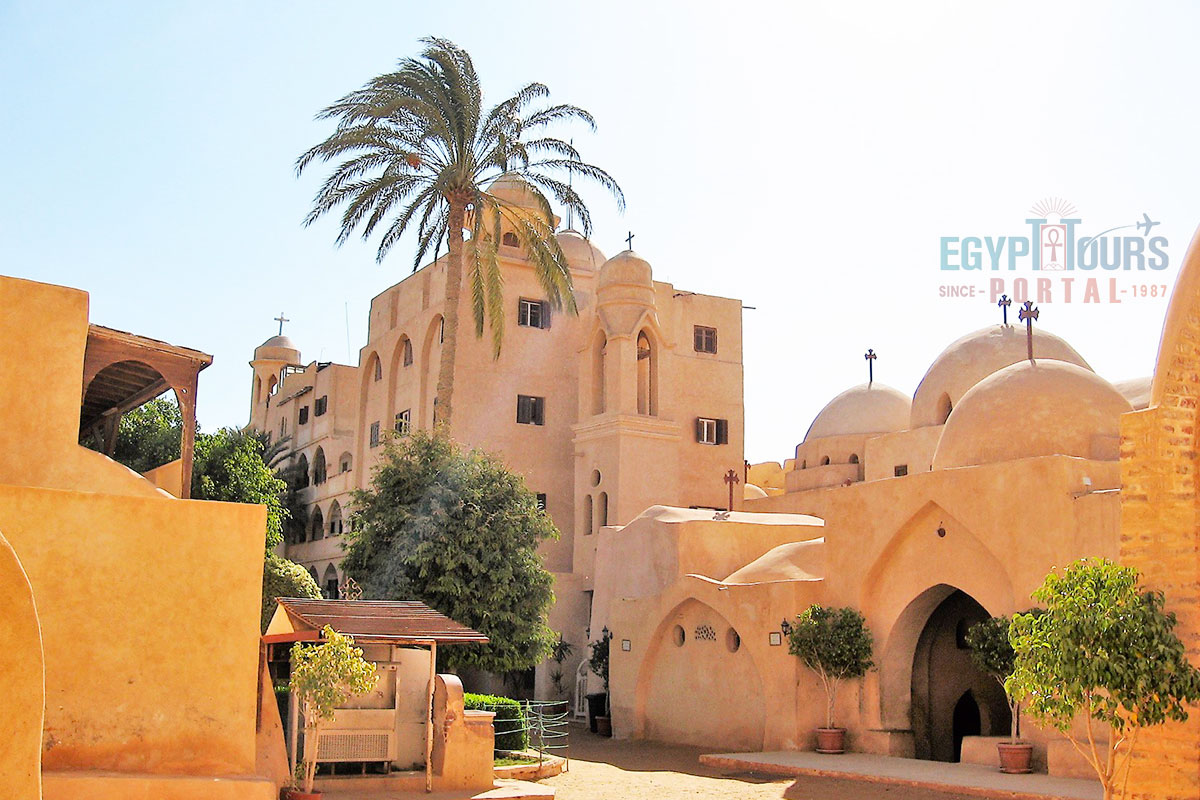
Wadi El Natrun is one of the most extraordinary archaeological wonders on earth, which is also known as Scetis or Skete, a depression in northern Egypt below sea level, containing alkaline lakes, salt deposits, and marshes. It's one of three early Christian monastic centers in the Nitrian Desert, along with Nitria and Kellia. Scetis is widely famous for its ancient monasteries that are still in use today, which are the Monastery of Anba Bishoy, the Monastery of Baramus, the Monastery of Abu Makar, and the Monastery of El-Suryan.
The valley holds several fossil remains of prehistoric animals and has historical and religious significance dating back to ancient Egyptian times. It provided materials for mummification and glassmaking. The region became a center for Christian monasticism, with hermit monks seeking solitude and spiritual growth. Despite invasions and conflicts, several monasteries have survived to the present day, making Wadi El Natrun a significant hub of Coptic monasticism.
Additionally, it is believed to be the crash site of Antoine de Saint-Exupéry's plane, inspiring his famous work, "The Little Prince." One of the top five best-selling books in the world.
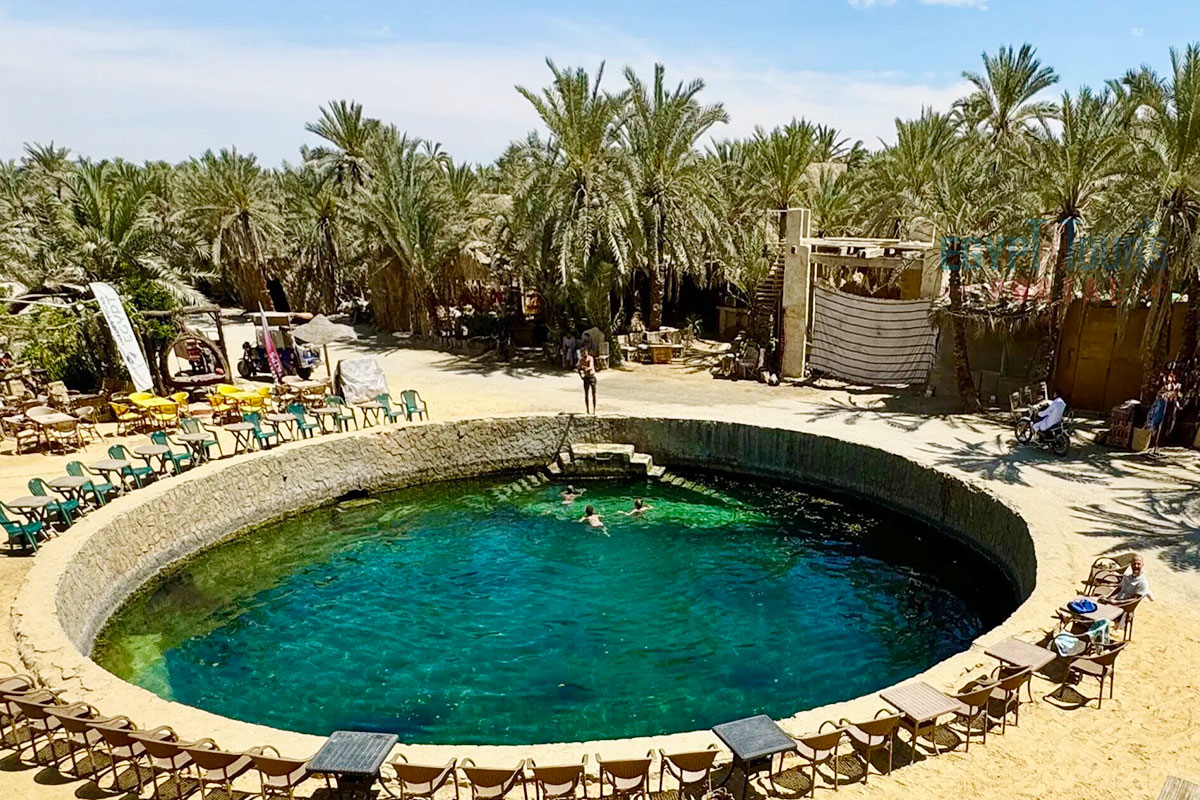
The renowned springs of Siwa, including the magical Cleopatra's Bath, which is known as the Spring of the Sun which have been famous since Herodotus' time. Legends suggest Cleopatra and Alexander the Great may have swum here while dating. The natural stone pool is fed by a clear spring, is a well-known spot in Siwa for mostly couples.
Recent efforts have been made to enhance the pool's appeal, but local customs should be respected, with most people remaining clothed while bathing. Cleopatra's Bath is popular and has changing rooms nearby. The water is so clear that it appears invisible when still and is used for bathing, swimming, and relaxation.
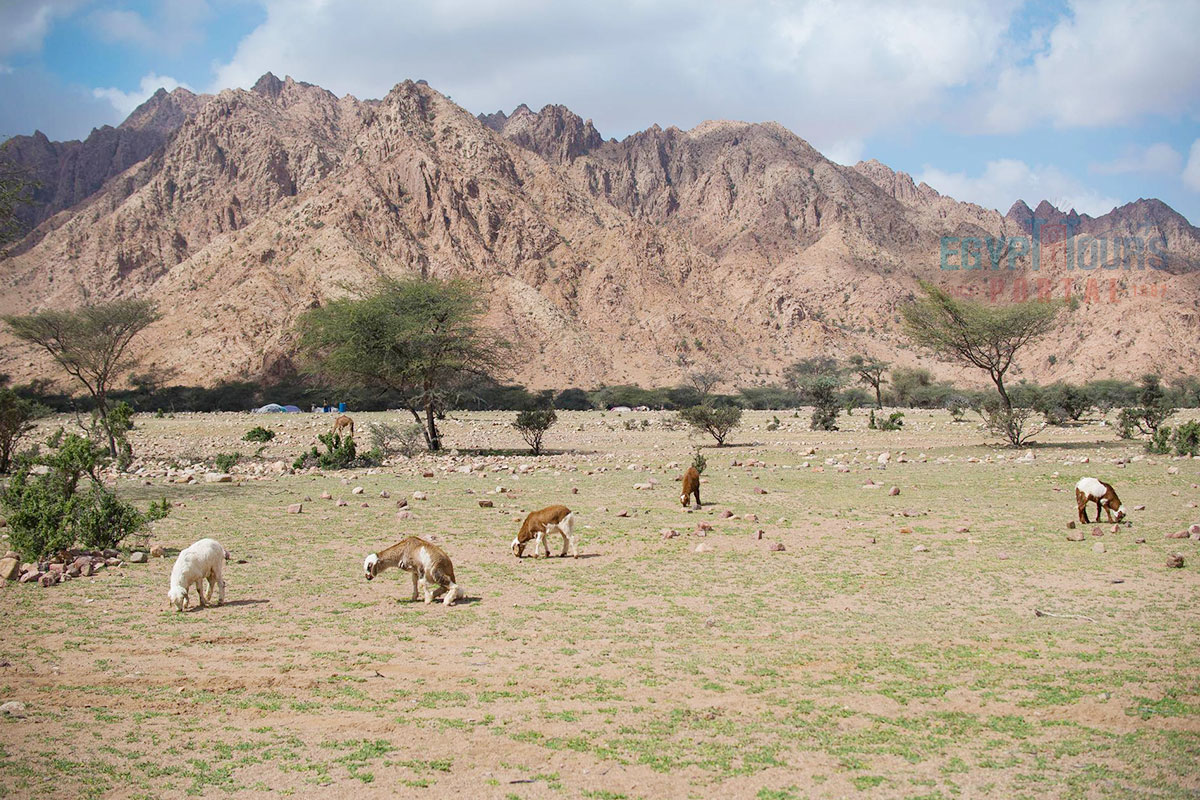
Gabal Elba is known as the majestic and unforgettable Elba Mountain, which is located in the Halaib Triangle of Northeast Africa. Despite territorial claims from both Egypt and Sudan, Egypt currently controls the area. The prominent peaks within the region include Gabal Elba, Gabal Shellal, Gabal Shendib, and Gabal Shendodai. Annual rainfall is low, but orographic precipitation near Gabal Elba can be as high as 400 mm due to the nearby Red Sea and its broad coastal front that captures moisture-laden winds.
The summit of Gabal Elba forms a "mist oasis" with a unique, magical ecosystem, which makes it a biodiversity hotspot. This misty environment supports a diverse flora, including around 458 plant species, some of which are endemic and Afrotropical in nature.
Gabal Elba National Park is known for covering a vast area, which was established to protect this ecosystem and is home to various wildlife, including the potentially last population of the Nubian wild donkey. Notably, an adult male leopard was sighted in the region in 2014, marking the first leopard sighting in Egypt since the 1950s.
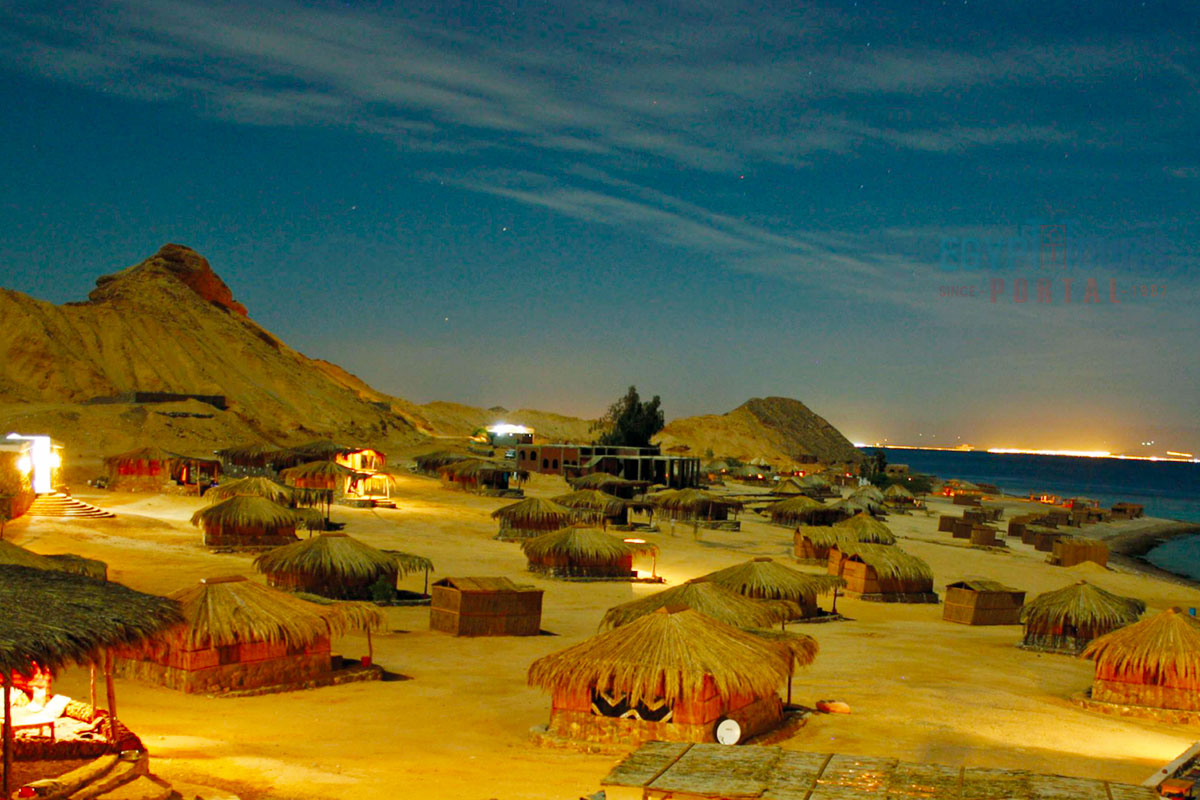
Ras Shaitan is a hidden picturesque destination in Egypt that offers a magical slice of paradise, which represents the angelic spirit of Sinai. It takes around six hours from Cairo by car, which is cost-effective, especially for groups. Buses also stop at Nuweiba, but confirm the drop-off point. Options range from tents on the sand to hillside huts or seaside cabins. For added comfort, private huts are preferable, with shared but clean bathrooms.
It creates opportunities for campfire gatherings and enjoying the clear night sky. Ras Shaitan offers diverse and delicious food options, including a traditional Bedouin breakfast. The best way to enjoy the heavenly nature of Ras Shitan is by camping with epic, mountain views, blue sky waters, among the Bedouin tribe, plus be a part of some epic diving trips.

Wadi Al-Hitan is an archaeological marvel situated in Egypt's Western Desert that holds unique significance as the sole location globally where the remains of ancient whale families can be observed in their original geological context from 40 million years ago. Inscribed on UNESCO's World Heritage list, it is located within Wadi el Rayan Protected Area, known for its rich collection of vertebrate and invertebrate fossils known as the archaeoceti (an extinct sub-order of whales).
This spectacular site offers a remarkable display of incredible whale skeletons dating back to the Eocene Age, some retaining small hind limbs and feet. It was discovered in 1902, and subsequent expeditions revealed around 400 whale and sea cow skeletons, shedding light on whale evolution. The fossils suggest that whales evolved from four-legged land mammals, adapting to the sea due to changing climates and abundant food sources near shorelines.
The most prominent species found is Basilosaurus displays the successful transition to aquatic life. The preserved fossilized whales of Wadi El-Hitan provide vital deep insights into the evolutionary history of these majestic ancient creatures.

The Black Desert is a highly rare marvel that is situated in western Egypt between the marvelous White Desert and the Bahariya Oasis, which features distinct volcano-shaped mounds spread over approximately 30 km. These mounds are up to 100 meters tall and are capped with basalt sills, lending them their characteristic black hue. The region's geology reveals varying sizes, compositions, and colors of mounds, including dark iron quartzite and reddish iron sandstone.
Nearby volcanic hills point to ancient eruptions of dark volcanic dolerite dating back 180 million years. Fossilized woodlands and shrubs indicate the past presence of plant life. Following the discovery of a massive dinosaur skeleton on its borders, which was designated a natural reserve in 2010.
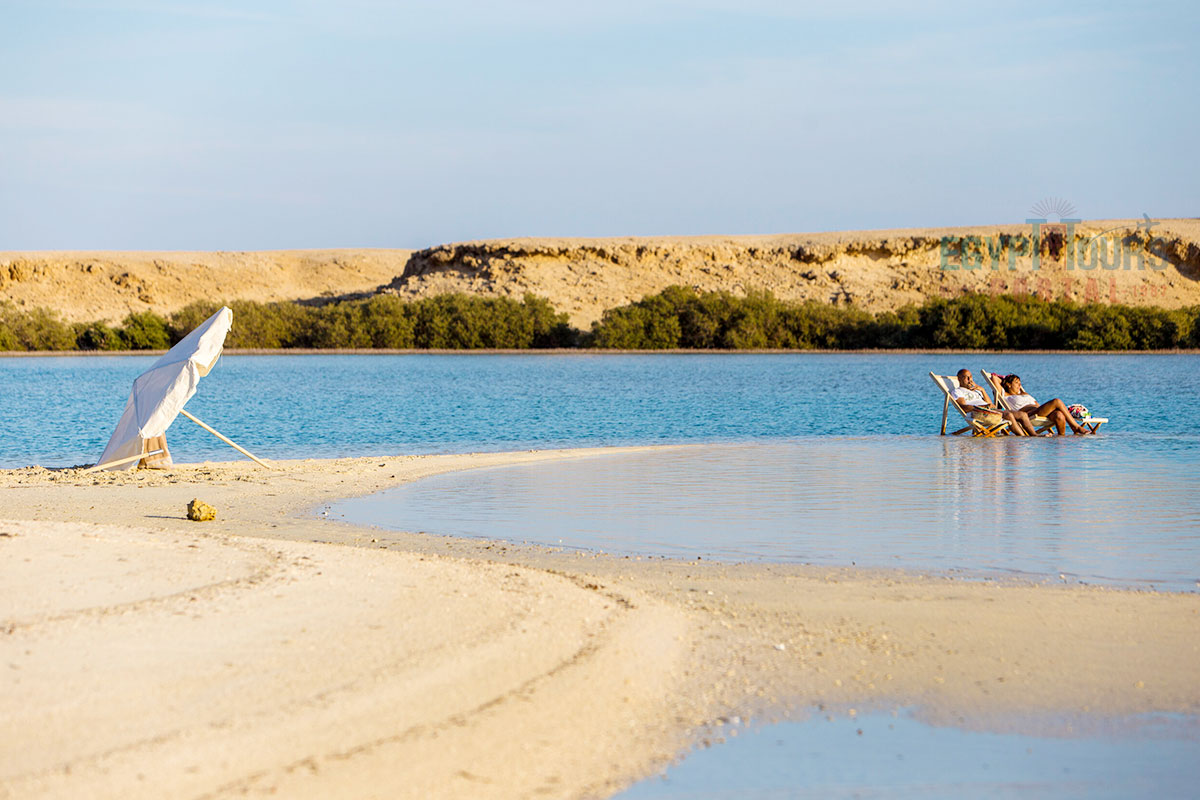
Marsa Alam is located on the western shore of the Red Sea in southeastern Egypt, which is a rapidly growing tourist destination known for its clear waters and white sandy beaches. It has gained popularity due to the opening of Marsa Alam International Airport in 2003. Often referred to as the "Egyptian Maldives," it offers stunning beaches, with Abu Dabab beach being famous for turtle sightings and diverse marine wildlife like crocodilefish and octopuses.
The city is a world-class kitesurfing hub that serves as a starting point for Super Safaris. Marsa Alam features highly attractions beyond its beaches, including the Emerald Mines and the Temple of Seti I at Khanais. Despite being north of the tropical zone, the city experiences a tropical hot desert climate, with steadier temperatures compared to nearby locations like Hurghada and Sharm el-Sheikh. The Red Sea's temperature at this location ranges from 22 to 29 °C (72 to 84 °F) throughout the year.
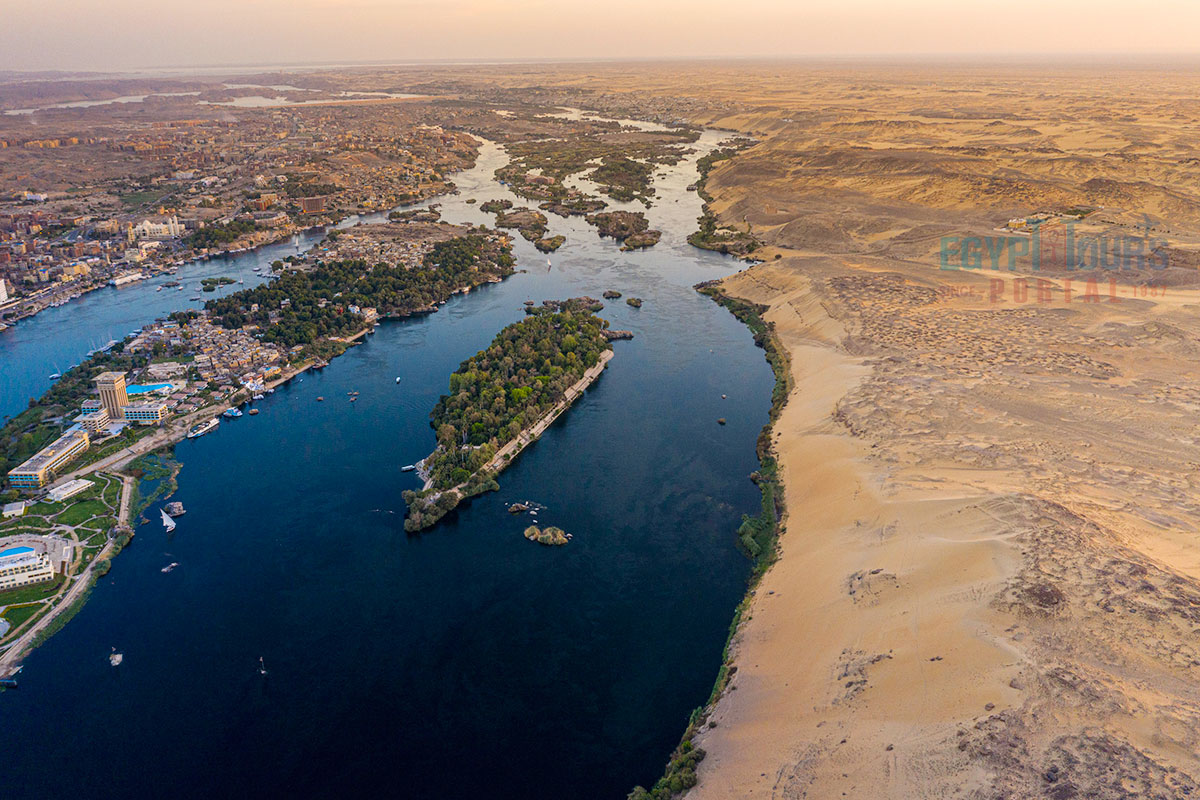
El Nabatat Island, also called Kitchener's Island or Geziret En Nabatat which is a picturesque and beautiful oval-shaped isle in the Nile at Aswan. It hosts the Aswan Botanical Garden and is less than a kilometer in size. Positioned near Aswan, it is a notable island, with Elephantine Island being larger and situated between El Nabatat and the city.
It was named after Lord Kitchener due to its owner during his role as Consul-General in Egypt, the island was transformed into a lush paradise with exotic Indian trees and plants, thanks to Kitchener's efforts and support from the Ministry of Irrigation.
The island encompasses the Aswan Botanical Garden, which showcases diverse subtropical, exotic, and rare plant species like the Royal Palm and Sabal Palm. Lord Kitchener established these gardens, which offer a serene escape for locals and tourists, a tranquil refuge from city noise, and a popular spot for relaxation and picnics.
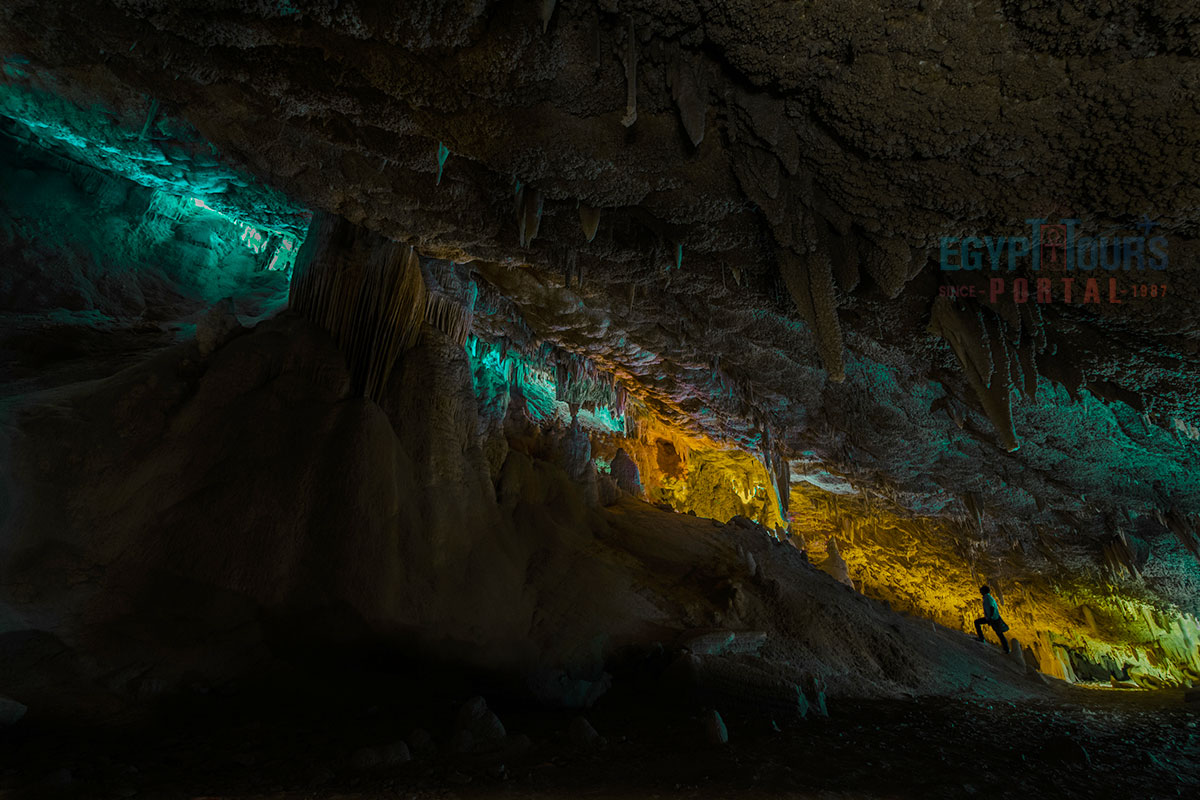
Sannur Cave is one of the rarest and exotic marvels in Egypt, which was discovered in the 1980s near Beni Suef, resulting from quarry blasting, and features a single chamber measuring 700 meters in length and 15 meters in diameter. It's a limestone cave with alabaster formations due to thermal springs.
Its remarkable stalactites and stalagmites have led to its recognition as a Protected Area since 1992. The cave is a prime example of a karst cave formed by groundwater percolation through Eocene limestone, resulting in stunning formations. Above ground, red soil deposits and swallow-holes are present. Located 10 km from Beni Suef, it's about a 2-hour drive from Cairo.
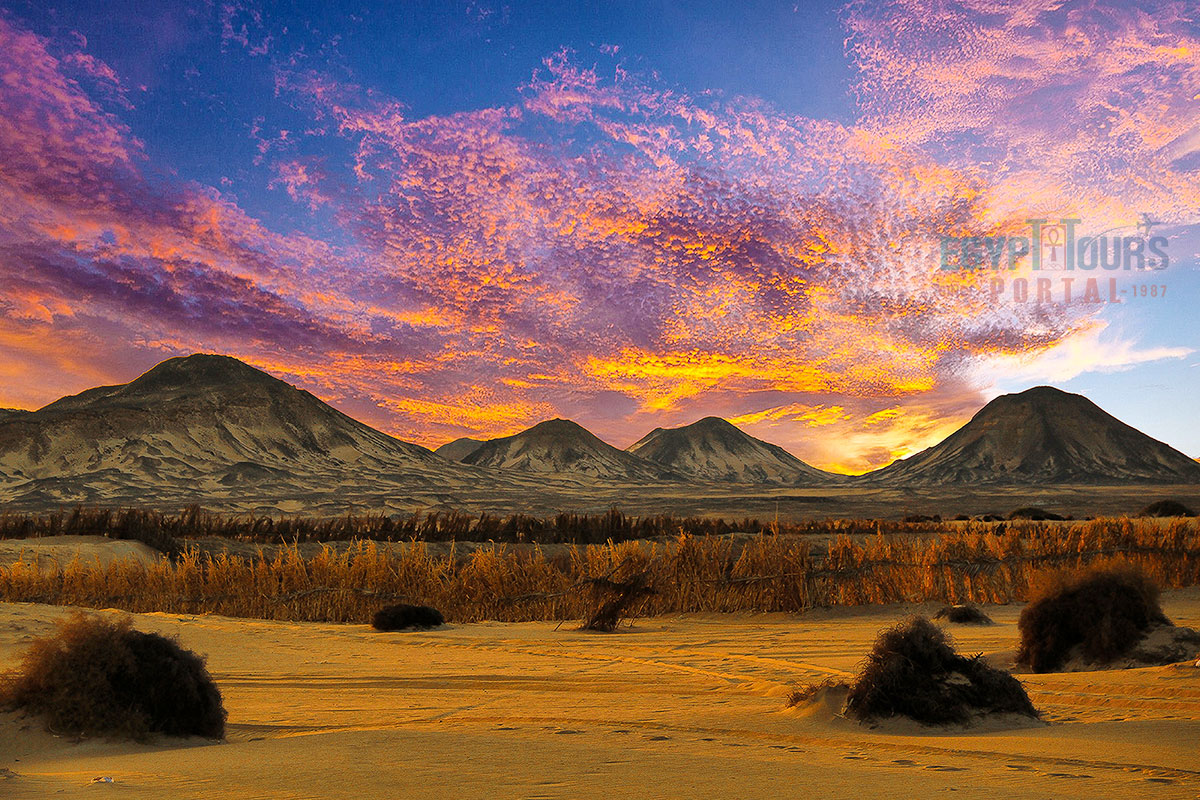
Al-Wahat al-Bahriyah, also known as the northern oasis, is located about 360 km southwest of Cairo in a depression. It was historically connected to the Nile Valley by caravans, taking a three-day journey between the oasis and the Nile. The Bahariya oasis is surrounded by steep slopes and is characterized by basalt-capped mounds formed during volcanic activity in the Cretaceous Period. The highest point is 128 meters above sea level, covering an area of nearly 1,800 km². Although inhabited for over 10,000 years, Bahariya's human traces mostly date back to the Middle Kingdom of Ancient Egypt.
The oasis flourished culturally and economically from the 26th Dynasty to the Roman era. It consists of several villages, with Bawiti being the main one. The White Desert, or el-Sahara el-Beida, is a major attraction in Bahariya, featuring spectacular chalk-white landscapes with unique rock formations formed by erosion. The region was once an ocean bed, later becoming a savannah with diverse flora and fauna.
The White Desert Park is a protected area, offering guided 4WD tours to witness its mesmerizing scenery, especially during sunset and dawn. The Black Desert, known as Sahara Suda, showcases black stone-covered terrain and is a popular safari destination. The Crystal Mountain, with Barite and Calcite crystals, lies between Bahariya and Farafra.
The Golden Mummies Museum reveals well-preserved mummies and artifacts from the Roman Period. Notably, the White Desert, Crystal Mountain, and other sites offer remarkable experiences, allowing visitors to connect with ancient history, rich culture, and natural beauty.
Egypt holds a stunning collection of natural wonders, offering travelers a diverse and unforgettable experience. From the life-giving Nile River and vibrant Red Sea coral reefs to the towering Sahara dunes and surreal landscapes of the White Desert, the country’s geography is a masterpiece of nature.
Serene oases like Siwa and Fayoum, historic sites like Mount Sinai and St. Catherine’s Monastery, and protected areas such as Ras Mohammed and Wadi El Gemal National Parks further showcase Egypt’s rich natural heritage. Each destination invites visitors to explore the breathtaking beauty and grandeur of Egypt’s landscapes. Book one of our many incredible Egypt tours and Nile cruises that will fill every moment with wonder and cherish memories.
Private 4 Days Cairo Tour Packages for Indian Travelers 4 days Cairo Egypt Tour pack...
Tour Location: Cairo – Giza...
5 Days Cairo and Alexandria Tour Package For Indian Travelers 5 days Cairo and Alexa...
Tour Location: Cairo/Giza/Alexandria...
6 Days Cairo, Luxor & Aswan Tour Package For Indian Travelers 6 days Cairo, Luxo...
Tour Location: Cairo/Giza/Aswan/Luxor...
Amazing 7 Days Cairo and Hurghada Holiday for Indian Travelers 7 Days Cairo & Hu...
Tour Location: Cairo – Giza – Hurgh...
The entire country of Egypt deserve to be explored with its every heavenly detail but there are places that must be seen before any other such as the breathtaking Hurghada's red sea, The wonders of Cairo the pyramids of Giza, the great sphinx, the Egyptian Museum, Khan El Khalili Bazaar, the wonders of Luxor like Valley of the Kings, Karnak & Hatshepsut temple and the wonders of Aswan such as Abu Simbel temples, Philea temple, Unfinished obelisk and The Wonders of Alexandria like Qaitbat Citadel, Pompey's Pillar and Alexandria Library. Read more about the best places to visit in Egypt.
If you want to apply for a Visa On Arrival that lasts for 30 days then you should be one of the eligible countries, have a valid passport with at least 6 months remaining and pay 25$ USD in cash, as for the E-Visa for 30 day you should have a valid passport for at least 8 months, complete the online application, pay the e-visa fee then print the e-visa to later be presented to the airport border guard. You could also be one of the lucky ones who can obtain a free visa for 90 days. Read more about Egypt travel visa.
Egypt has a variety of delicious cuisines but we recommend “Ful & Ta’meya (Fava Beans and Falafel)”, Mulukhiya, “Koshary”, a traditional Egyptian pasta dish, and Kebab & Kofta, the Egyptian traditional meat dish.
The best time to travel to Egypt is during the winter from September to April as the climate becomes a little tropical accompanied by a magical atmosphere of warm weather with a winter breeze. You will be notified in the week of your trip if the Climate is unsafe and if any changes have been made.
You should pack everything you could ever need in a small bag so you could move easily between your destinations.
We have been creating the finest vacations for more than 20 years around the most majestic destinations in Egypt. Our staff consists of the best operators, guides and drivers who dedicate all of their time & effort to make you have the perfect vacation. All of our tours are customized by Travel, Financial & Time consultants to fit your every possible need during your vacation. It doesn't go without saying that your safety and comfort are our main priority and all of our resources will be directed to provide the finest atmosphere until you return home.
You will feel safe in Egypt as the current atmosphere of the country is quite peaceful after the government took powerful measures like restructuring the entire tourist police to include all the important and tourist attractions in Egypt. Read more about is it safe to travel to Egypt.
Wear whatever feels right and comfortable. It is advised to wear something light and comfortable footwear like a closed-toe shoe to sustain the terrain of Egypt. Put on sun block during your time in Egypt in the summer to protect yourself from the sun.
The best activity is by far boarding a Nile Cruise between Luxor and Aswan or Vise Versa. Witness the beauty of Egypt from a hot balloon or a plane and try all the delicious Egyptian cuisines and drinks plus shopping in old Cairo. Explore the allure and wonders of the red sea in the magical city resorts of Egypt like Hurghada and many more by diving and snorkeling in the marine life or Hurghada. Behold the mesmerizing western desert by a safari trip under the heavenly Egyptian skies.
There are a lot of public holidays in Egypt too many to count either religious or nation, the most important festivals are the holy month of Ramadan which ends with Eid Al Fitr, Christmas and new years eve. Read more about festivals & publich holidays in Egypt.
Egypt is considered to be one of the most liberal Islamic countries but it has become a little bit conservative in the last couple of decades so it is advised to avoid showing your chest, shoulders or legs below the knees.
Arabic is the official language and Most Egyptians, who live in the cities, speak or understand English or at least some English words or phrases. Fewer Egyptians can speak French, Italian, Spanish, and German. Professional tour guides, who work in the tourism sector, are equipped to handle visitors who cannot speak Arabic and they will speak enough English and other languages to fulfill the needs of all our clients.
The fastest way is a car, of course, a taxi. If you are in Cairo ride a white taxi to move faster or you could board the fastest way of transportation in Egypt metro if the roads are in rush hour.
The temperature in Egypt ranges from 37c to 14 c. Summer in Egypt is somehow hot but sometimes it becomes cold at night and winter is cool and mild. The average of low temperatures vary from 9.5 °C in the wintertime to 23 °C in the summertime and the average high temperatures vary from 17 °C in the wintertime to 32 °C in the summertime. The temperature is moderate all along the coasts.
It is the home of everything a traveler might be looking for from amazing historical sites dating to more than 4000 years to enchanting city resorts & beaches. You will live the vacation you deserve as Egypt has everything you could possibly imagine.









